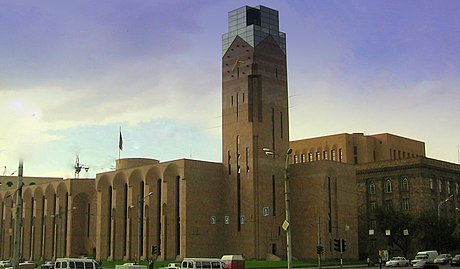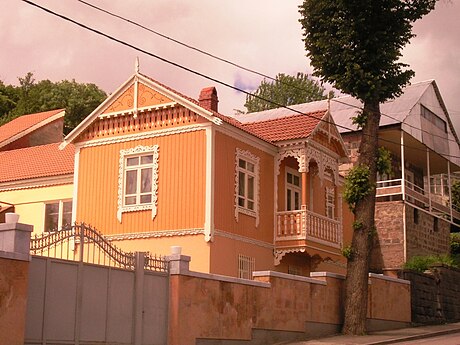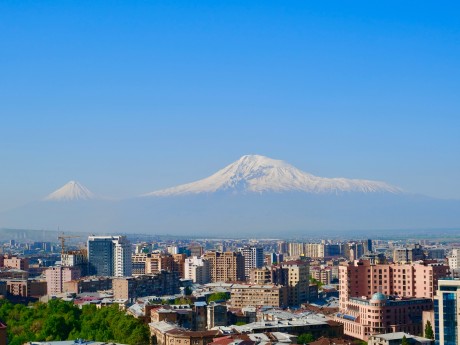Armenia: Yerevan & Tsaghkadzor
This journey to Armenia promises a captivating blend of history, culture, and natural wonders, with the dynamic capital city of Yerevan and the picturesque mountain resort town of Tsaghkadzor. In Yerevan, delve into the heart of Armenian heritage by wandering through the historic streets, adorned with pink-hued buildings and centennial landmarks. Visit the Cascade Complex for a panoramic view of the city and explore the Matenadaran, a repository of ancient manuscripts.
Read more
This journey to Armenia promises a captivating blend of history, culture, and natural wonders, with the dynamic capital city of Yerevan and the picturesque mountain resort town of Tsaghkadzor. In Yerevan, delve into the heart of Armenian heritage by wandering through the historic streets, adorned with pink-hued buildings and centennial landmarks. Visit the Cascade Complex for a panoramic view of the city and explore the Matenadaran, a repository of ancient manuscripts. As the sun sets, the vibrant nightlife beckons with lively cafes and bars. Your next stop is Tsaghkadzor, nestled in the scenic mountains, inviting outdoor enthusiasts with its year-round appeal. In winter, indulge in world-class skiing and snowboarding on the slopes, while the warmer months offer hiking and paragliding adventures. Visit the Kecharis Monastery or take a tour to Lake Sevan. Whether you're drawn to the urban charm of Yerevan or the alpine allure of Tsaghkadzor, Armenia promises a tapestry of experiences that will leave a lasting impression. Waterviews strives to offer accommodation options within walking distance of water and/or in an area of touristic interest. Our prices include taxes (but excludes local tourist taxes). Customize your trip to your personal preferences with optional activities (hit the “Add Activities’’) or change hotels, etc. Contact us for customization at no extra cost at: Service@waterviewstravel.com
Destinations
- Yerevan
- Tsaghkadzor
Itinerary
Yerevan

Yerevan (Armenian: Երեւան) is the capital of the Republic of Armenia, one of the three hubs of the South Caucasus and is home to over a million people - the largest Armenian community in the world. In Soviet years Yerevan underwent massive reconstruction, following architect Alexander Tamanyan's plan to make a "perfect city" - a Neo-Classical town with wide avenues, resembling Paris, Vienna and Saint Petersburg.
Central Yerevan is a true jewel of early Soviet architecture. It is also home to some large scale Modern and Post-Modern marvels which are mostly the result of Soviet-Armenian architectural megalomania. In Soviet days Yerevan had already become known as the Pink City as much due to the colour of the tufa stone used for building as for the flamboyant spirit of her young population.
Read more
Yerevan (Armenian: Երեւան) is the capital of the Republic of Armenia, one of the three hubs of the South Caucasus and is home to over a million people - the largest Armenian community in the world. In Soviet years Yerevan underwent massive reconstruction, following architect Alexander Tamanyan's plan to make a "perfect city" - a Neo-Classical town with wide avenues, resembling Paris, Vienna and Saint Petersburg.
Central Yerevan is a true jewel of early Soviet architecture. It is also home to some large scale Modern and Post-Modern marvels which are mostly the result of Soviet-Armenian architectural megalomania. In Soviet days Yerevan had already become known as the Pink City as much due to the colour of the tufa stone used for building as for the flamboyant spirit of her young population.
Additional Information
Even though the history of Yerevan dates back to the Erebuni fortress, making it at least 2,800 years old, little remains of what was small settlement saving the excavations at Hrazdan river gorge, Erebuni, Karmir Berd and Avan. These sites have been excavated, and the artifacts found are in museums today. Being on a strategically important place Yerevan was a constant war stage for rival Ottoman, Persian and Russian Empires. It has been repeatedly ruined by those wars or natural disasters (e.g. an earthquake in 17th century almost entirely destroyed the town). Few buildings of the old Erivan survived to the present-day Yerevan.
At the time of Armenia's independence in 1918, when Yerevan was made the capital of an independent Armenia, Yerevan was a town of just 20,000. Large scale construction began, which took a more holistic approach under the new city plan laid out by Alexander Tamanyan. The plan involved the demolition of much of what existed, in favor of concentric circles, parks, and taller structures. He planned for Yerevan to become a metropolis of 200,000 people.
Read
Michael Arlen, Passage to Ararat, an autobiographical account of an American-Armenian's first visit to Soviet Armenia.
People
Yerevan is a very ethnically homogeneous city, though tiny Yezidi and Molokan (Russian) minorities exist. Because the population of the city was only 20,000 a century ago, the vast majority of the Armenians are immigrants themselves, from all over the world. From the villages and towns of Armenia, from Tbilisi which was the centre of Eastern Armenian culture before 1918, from Western Armenia as genocide survivors poured in, and even from the middle east and Europe in a large, post-World War II wave of immigration. Since independence, the city has become the heart of the entire Armenian world, as the divisive communist governments demise has allowed the Diaspora – larger in number than the population of Armenia itself, to embrace the city as its own.
Religion
Many visitors will be surprised to know that Armenia is not just an outcrop of Christianity in the Caucasus, but it is the first country in the world to adopt Christianity as a state religion. The king declared Christianity the state religion in 301 AD. Christianity has been uninterruptedly practiced in Armenia ever since in its own traditions.
The Armenian Apostolic Church, or just Apostolic Church, is the National Church of Armenia. It is very traditional; in practices (but not history) is similar to Orthodox and Catholic movements, and to the Reformed Churches, e.g. the Church of England. At the same time the Armenian Apostolic Church has some strikingly different practices, like allowing animal sacrifices or celebrating Christmas on January 6 along with Theophany.
The great majority of Armenians identify themselves as Apostolic Christians and have their own Catholicos (religious leader, like the Pope for Catholics). Today, the vast majority of Armenians do not attend church each Sunday, with visits revolving around weddings and baptisms, or occasionally dropping in to light a candle. Soviet restructuring of the city left Yerevan with very few churches: though many new ones have been built, and old ones rehabilitated, since independence.
The Protestant (Evangelical) Armenians are rather few in number and have only one church on Nar-Dos street.
Anglican (Episcopal) Christians congregate at (Armenian Apostolic) Surb Zoravor church for Sunday Eucharist.
Orthodox Christians maintain one church in Kanaker district of Yerevan. A new, large-scale, onion-domed Orthodox Cathedral of the Holy Cross is under construction at Yerevan Lake district, visible from the highway coming from the airport. However, this will have mostly symbolic structure as the Orthodox Christians are very few in number.
Yezidi (a religious and ethnic minority in Armenia) religious rituals, as most of that religion, are kept secret, so their practices cannot be observed by outsiders. The largest Yezidi temple in the world is under construction in a village outside of Yerevan.
Muslims are steadily growing in numbers since the collapse of the Soviet Union, fueled by Iranian immigration. There is one mosque on Mashtots Ave.
Many Christian sects are also present in Yerevan, and they congregate in schools, sport clubs, concert halls and the like.
Climate
With a semi-arid climate, Yerevan experiences long hot summers, and cold snowy winters, both with little precipitation. The winter is not a good time to visit Yerevan, due to icy sidewalks and smoky restaurants, any other time of year is worth a visit. Spring offers mild but sometimes wet weather, and lots of green hills and wildflowers. Summer is very hot, but the long, late nights at the cafes, and the fruits and vegetables are amazing. Autumn is the most popular, with perfect weather, and great farm fresh foods.
Tourist office
Checkout the tourism magazine for useful information: https://www.yerevan.am/en/tourism-magazines-of-yerevan/
© Sourced from Wikivoyage
Tsaghkadzor

Tsaghkadzor, a picturesque mountain resort town in Armenia, is a haven for nature lovers and adventure seekers. Tsaghkadzor translates to "The Gorge of Flowers" in Armenian, aptly capturing the town's beauty. Renowned for its ski resorts and outdoor activities, Tsaghkadzor transforms into a winter wonderland with pristine slopes and opportunities for skiing, snowboarding, and snowshoeing. In addition to its winter appeal, Tsaghkadzor offers a tranquil escape during the warmer months, inviting outdoor enthusiasts to explore hiking trails, enjoy panoramic views, and engage in activities like paragliding.
Read more
Tsaghkadzor is a city in Central Armenia.
Additional Information
Tsaghkadzor is known for being a ski resort, with forests and an ancient monastery. In the summer, people go there to get away from the city life of Yerevan, and the heat, for the fresh air in the mountains. In the winter, the town is completely overtaken by skiers and people who just want to relax and enjoy the snow and scenery.
© Sourced from Wikivoyage





